A Tale of Two Easters
by afatpurplefig

Part I
‘We’re going on a little walk’, my cousin announces, as I open the front door. Marley, her enthusiastic Labrador, pushes past me with an excitement that I struggle to match.
The day is warm and sunny, though, and there seems no good reason to stay inside, so we don our sneakers and set off at a cracking pace, down Woolston streets and across leafy shortcuts, with Marley leading the way.

Our first stop, Weston Shore, comes complete with apologies;
‘No sand here, I’m afraid.’
‘Not a real beach.’
‘Just stones for us.’


But Weston Shore is gorgeous. And, according to this excellent blog, it was once occupied by Romans and Vikings, which gives it a step up on your run-of-the-mill sandy version, nice as they are. There is something about the stones that makes it feel wild and unkempt. And the deckchairs tell me that it will take more than stones to deter visitors from watching the outline of sailboats on the horizon with soft serve ice-creams dripping down the backs of their hands.
Onward, we walk.
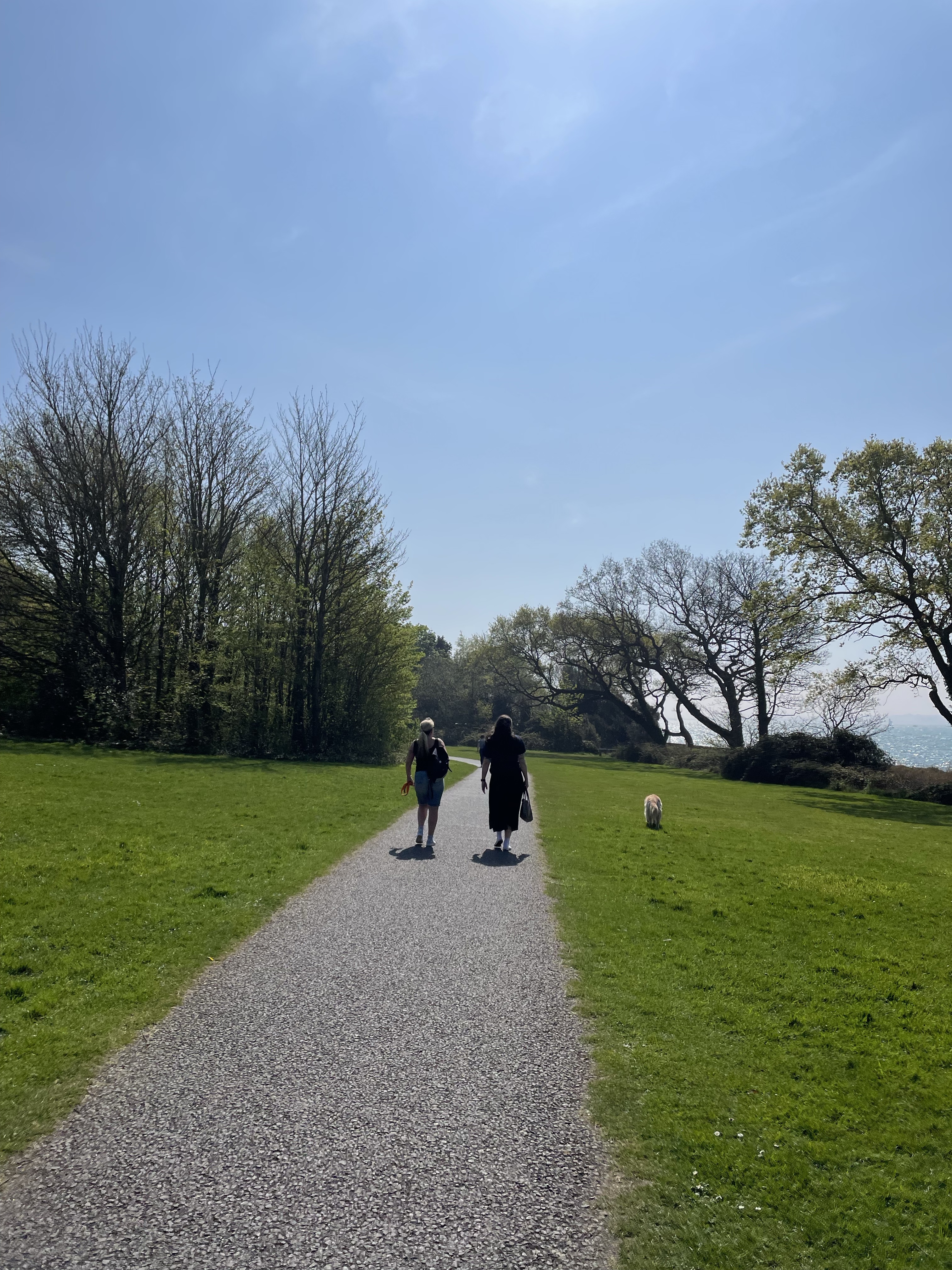
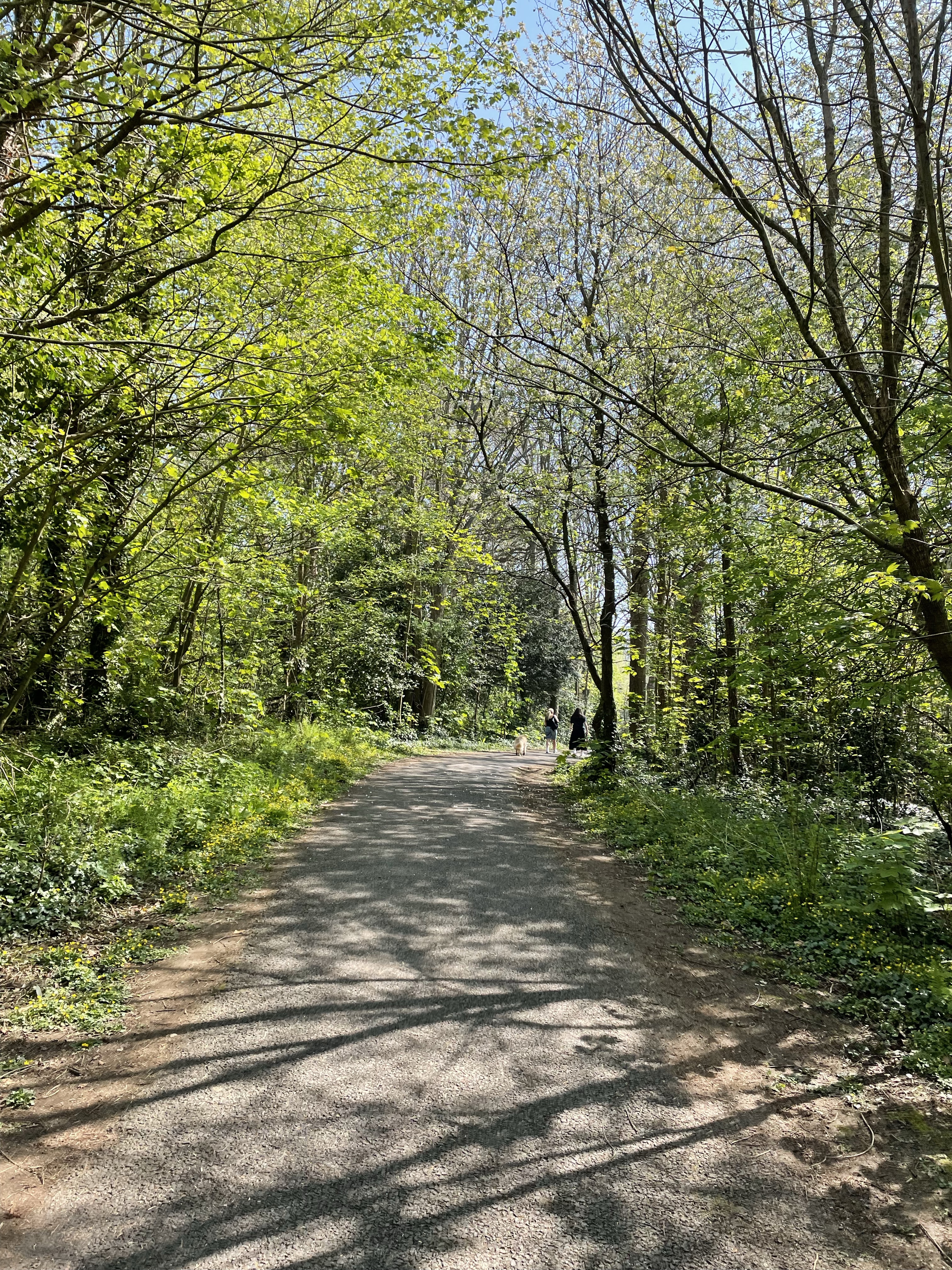
Thomas Gray, the English poet, once said that Netley Abby, the most complete surviving abbey built by Cistercian monks in southern England, is situated ‘in the bosom of the woods (concealed from profane eyes)’. We turn the corner to this:

These profane eyes love it. And not just because it provided inspiration for Austen’s Northanger Abbey.
The building has centuries of history in its stones. Built in the 1200s, the abbey was disbanded by Henry VIII in 1536, during the dissolution of the monasteries, who then gifted it to Sir William Paulet, the 1st Marquess of Winchester, for his loyal service to the king. Billy then set about making a mansion for himself, as you do, creating a large central courtyard, and demolishing the monks’ refectory in favour of a ‘grand turreted entrance’. His changes were made in red brick, which can still be seen, like a growth, on the original stone. The abbey owes its survival today to the death of a worker in 1704, which caused a delay to its demolition. I have no doubt that he haunts it today. I mean, look at this place:


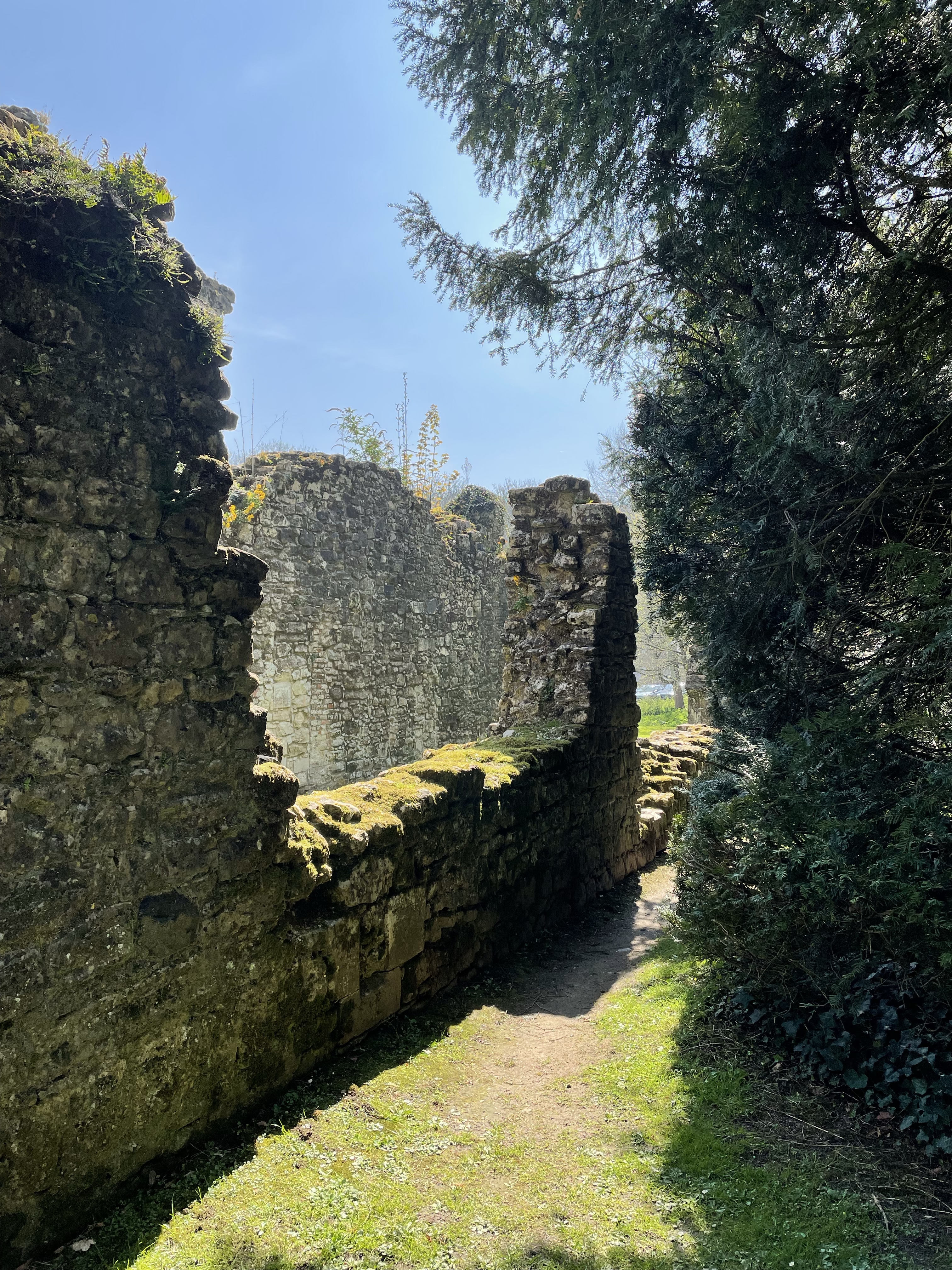
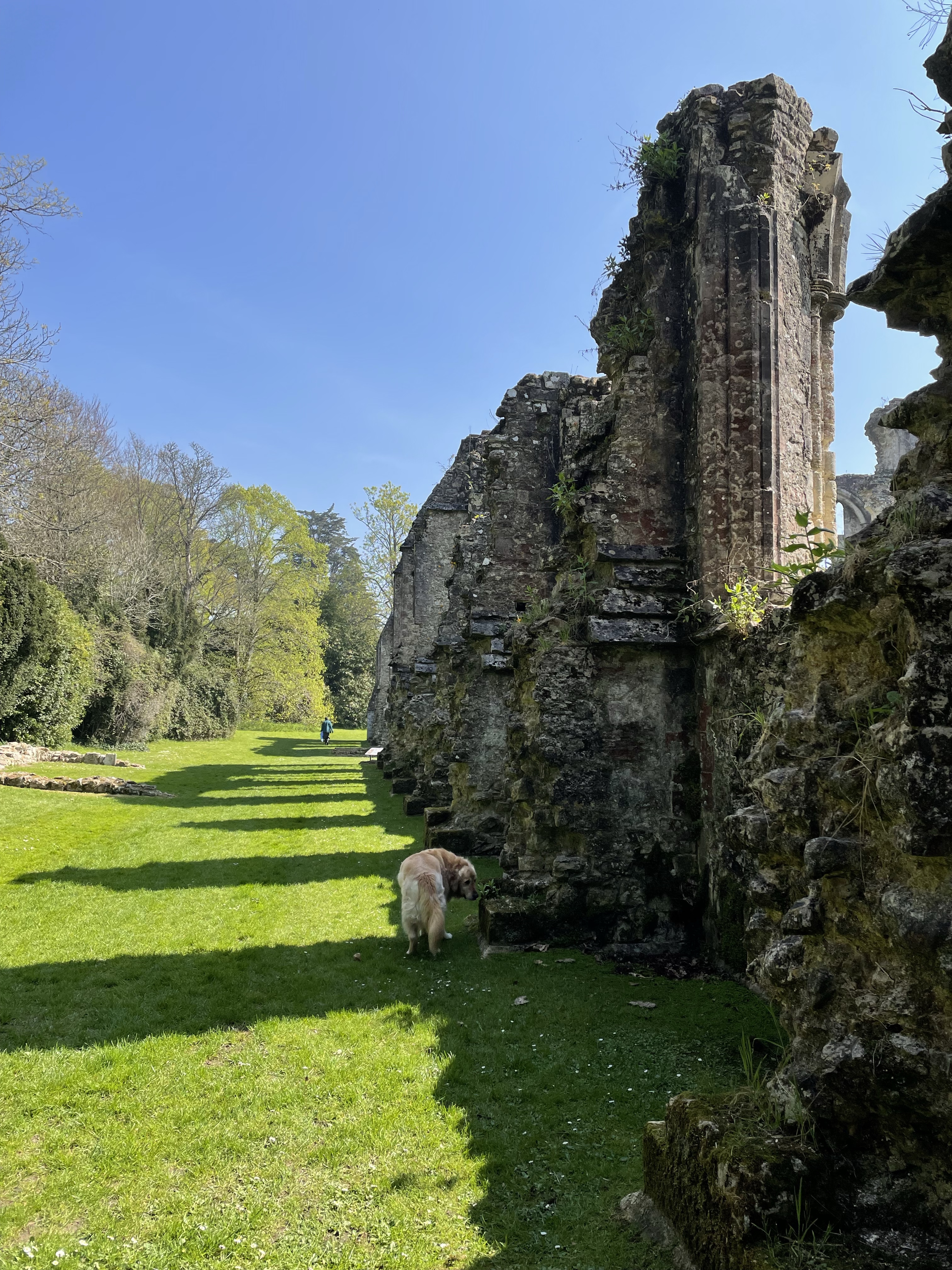
The writer Horace Walpole described the abbey in a letter in 1755:
The ruins are vast, and retain fragments of beautiful fretted roofs pendent in the air, with all variety of Gothic patterns of windows wrapped round and round with ivy … they are not the ruins of Netley, but of Paradise. – Oh! the purple abbots, what a spot had they chosen to slumber in!
What a spot, indeed.

I think what I love about the abbey, aside from the usual awe and wonder at the layers of history, is that it continues to provide a setting for life. The people around me have climbed its walls and hugged its trees (long story). They have been to abbey parties and shared tales of its ghosts. They have walked its underground tunnels as the waters rose around their feet. Ashes are strewn at the abbey and couples are wed, and it is the site of countless picnics. In the 1840s, visitors to the abbey complained that the atmosphere was ruined by ‘the popping of ginger beer’, which is pretty much my favourite quote of the day.



As we sit in the sun, a young girl runs by us with a handful of wildflowers, mid-collection.
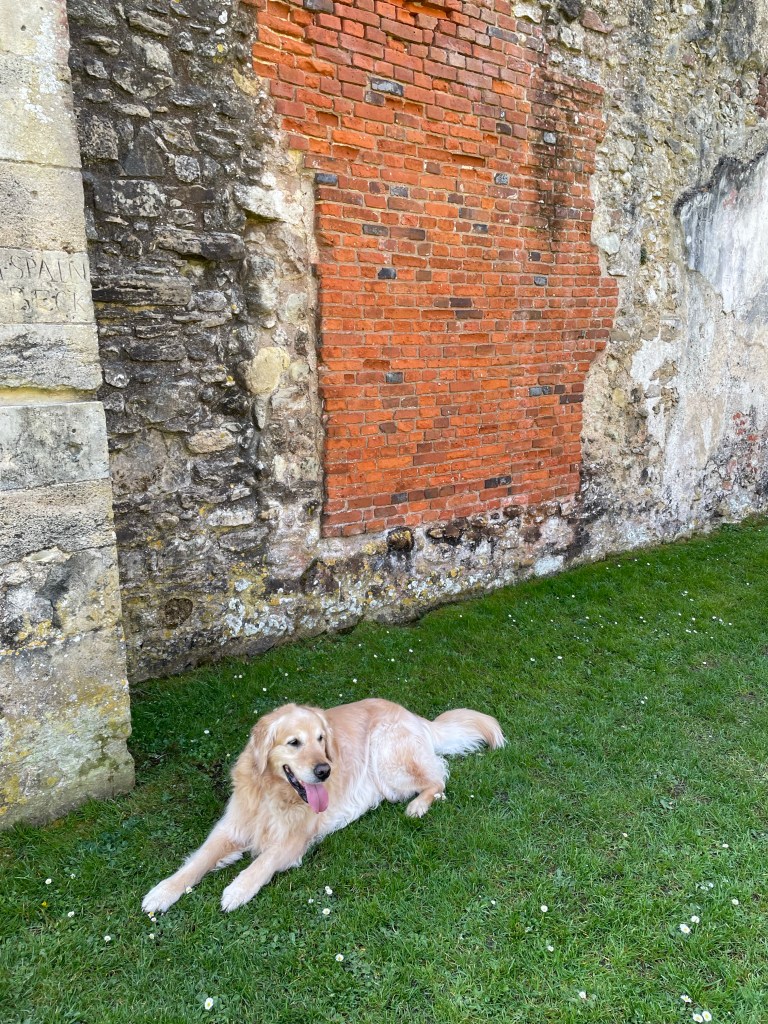
Onward, we walk.

Our next stop is Netley Hospital, or what remains of it, at least. Queen Victoria ordered that the Royal Victoria Hospital be built in response to the Crimean War, to treat military patients and ensure their swift return to duty. Florence Nightingale did not approve of the design of the hospital, favouring a series of separate pavilions, however, plans were well underway upon her return from Crimea, so construction continued on the longest building in England, at 1400 yards.

All that remains is the original chapel, old photographs, and this trippy version of Alice in Wonderland, filmed in the hospital’s interiors just before the building was demolished in 1966.


Onward we walk, stopping by the now-closed chippy and the Mr Whippy, with the final stages of our journey being felt in blistered feet and aching legs, and forearms and noses that are smattered with sunburn.
(Little walk my arse.)
Part II
After a much-needed nap, we join extended family at The Humble Plumb.
Let it be said that I like wine. I always order a large at the cinema in Newtown, and am the first to spruik the value of a bottle to any party greater-than-one. At The Humble Plumb, however, a large resembles a glass bucket on a stem, and, no matter my range of variations on ‘no’, I was accompanied by a constant row of white wine varietals.
Did I drink them? Of course I did. I also drank the pink shot. And never let it be said that I am not grateful for those drinks. I do hope, however, that by the time I started creating the memories that would materialise in my (painful) next-morning haze, that everyone was at least as drunk as I was.
We drank, laughed, smoked and ate chips. We debated the use of the word ‘chips’. We drank, and talked about parents and parenting. We drank, and re-enacted adverts and golf putting stances. We drank, and told stories, and questioned whether covid lingers in cigarette smoke. I conjured up many things to contribute, then gave up when stringing the words together presented too great a challenge.
After being ejected, we changed locations, from The Humble Plumb to this magnificent abode, complete with bar and smoking room. When I grow up, I have decided I shall have both. I shall also listen to far more Rod Stewart.

On the way home, the car broke down at a junction, and four shitfaced imbeciles pushed it onto the kerb (not the plan). Our designated driver remembers looking back and hearing me say;
‘This is the best Easter ever’.
It looks like drunk me could string the right words together after all.

I visited Netley in the 80’s with Karen and commented at the time about the graffiti (initials carved in the stone) I realised on closer inspection that the initials were carved in 1672. Graffiti is not a modern curse then. Dad.
Damn. I saw the graffiti and genuinely believed someone had deliberately used traditional lettering. I wish I had looked at it more closely!